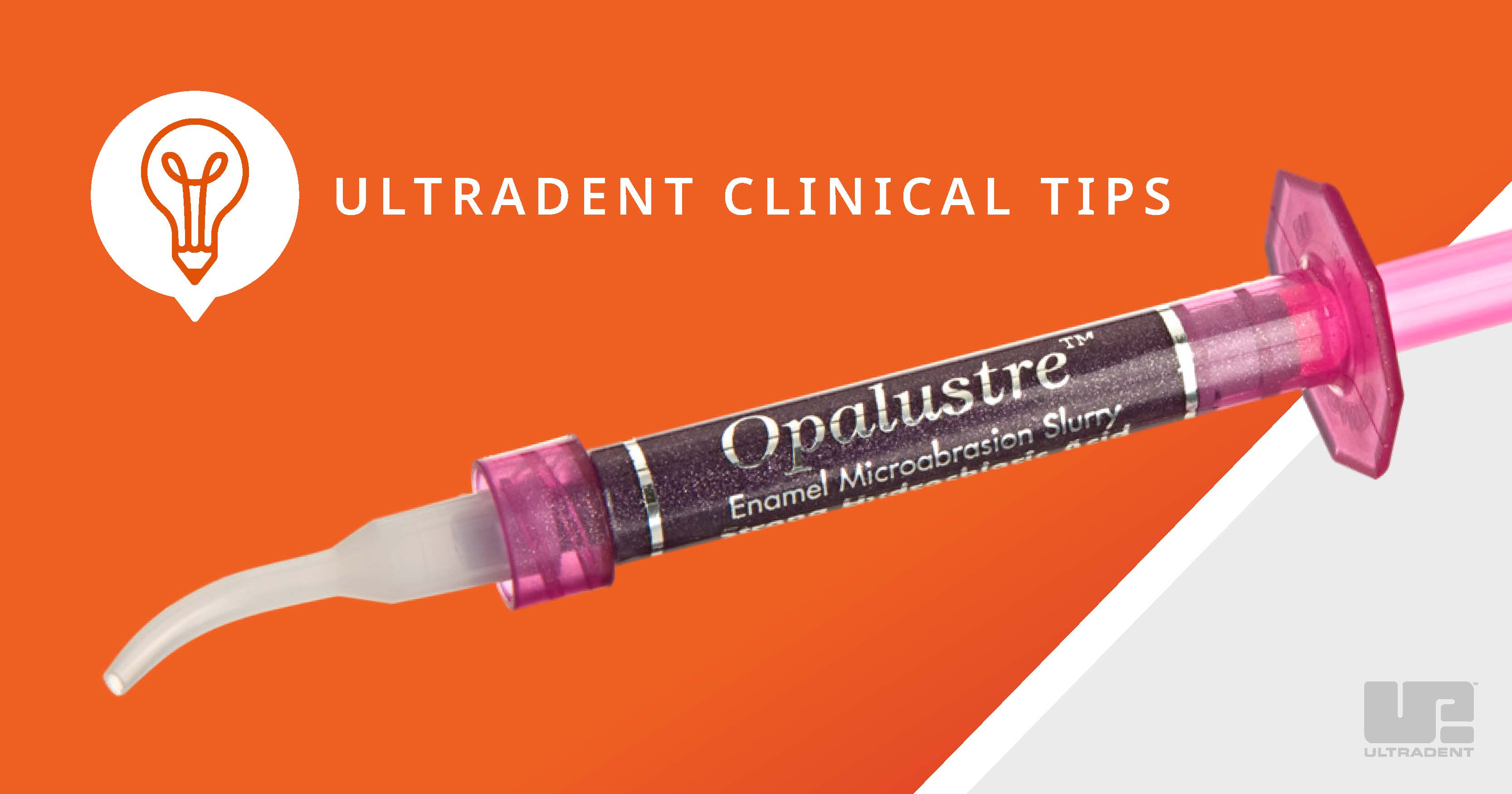Renato Miotto Palo, DDS
White spot lesions (WSLs), defined as “white opacity,” occur as a result of subsurface enamel demineralization that is located on smooth surfaces of teeth.
If improved oral hygiene and application of low-dose topical fluoride does not alter the appearance of the lesions, then further measures are available to a clinician. The two treatment options are teeth whitening and microabrasion.
This time our Clinical Tips come from Ultradent’s resident Endodontic and Whitening Clinical Advisor: Dr. Renato Miotto Palo.
Different situations can be the cause of a bad formation of the enamel. Those bad formations could change the normal reflectance of the light upon the enamel, which generates an appearance of a white spot.
“Any damage to a glassy or prismatic surface causes a white mark (similarly to scratching the glass on a watch). When you have a defect in enamel formation it will reflect white light. These are white spot lesions,” said Dr. Palo.
Visualize the Balance of Color and Translucency
“When we face any type of alteration, I prefer to start with the least invasive treatment and increase actions as needed,” Dr. Palo said. This approach provides reassurance to the patient and allows the doctor to preserve as much tooth as possible.
Then Dr. Palo continues, “It is preferable to start with whitening gel and then I can see the results. Then I can decide to go with microabrasion if needed. If the whitening gel lightens the tooth structure, it would make the white spots less perceivable, and they will blend to the tooth appearance.”
On another important discussion topic, Dr. Palo advises that “even a minor dehydration caused from teeth whitening can make an existing white spot more visible. The patients worry that the whitening agent created this, but the rehydration makes it go away.”
That is why a patient should give whitening a chance to mask the appearance of the WSLs before deciding to move to another treatment option.
A harmonic esthetic smile relies on so many factors; and it’s still preferable for the patient to whiten teeth under the care of a doctor who has developed esthetic instincts.
“Our teeth have two main tissues: dentin and enamel. Color of the tooth is the combination of the two. Normally dentin is darker, and enamel is lighter. Younger enamels are milky and older enamels are translucent. Older dentin is darker and younger dentin is lighter. The teeth’s color is a combination of the refraction and reflection of the light that faces the teeth structure.” Dr. Palo explained.
When to Decide on Microabrasion
If the whitening treatment didn’t achieve a desired result on some WSLs, a microabrasion is an option. It will remove a thin layer of the defected enamel prisms and return to a normal light reflectance and normal appearance.
About Our Microabrasion Product
Opalustre™ is a chemical and mechanical abrasion slurry. It’s indicated for removal of superficial enamel imperfections, including mild fluorosis discoloration.
Attributes include:
• One-appointment results
• 6.6% hydrochloric acid provides minimally invasive alteration through chemical stain removal
• Silicon carbide microparticles provide gentle mechanical abrasion where less than 0.2 mm of enamel is removed
In summary, the strategy is to start with tooth whitening gel so that the whitening action brings the substrate to a tone where white spots become imperceptible. While they are going through the whitening process the white spots may look more prominent, but to continue with whitening makes them less perceived. If the case requires further action, move on to microabrasion. It will remove a thin surface layer of altered enamel and return the affected teeth to a normal reflection and color.
If the enamel prisms still don’t have normal reflection and color, Dr. Palo suggests “a conservative composite if there are areas where these white spots go deeper to the dentin.”
To learn more about Opalescence™ teeth whitening products, please visit ultradent.com.

More About the Doc:
Dr. Palo is a graduate of the Paulista University in São Paulo, Brazil. He completed his Master at the State University of São Paulo, campus Sao Jose dos Campos - Brazil and doctorate at the State University of São Paulo, campus Araraquara - Brazil. He has worked as a part-time endodontist and part-time professor and presided over two postgraduate programs in Brazil.
He has organized dental congresses, including as scientific coordinator of São Paulo Dental Meeting. He is often invited to judge master’s and doctoral theses and has also worked as an article reviewer. Dr. Palo speaks Portuguese, Spanish, and English
© 2022 Ultradent Products, Inc. All rights reserved. 110322







